
Review on AMD Ryzen 7 5800X Desktop Processor - 8-Core, 16-Thread Unlocked by Shawn Jimenez

8 Core King - *EDIT* PBO2
This processor had only been "available" for about 2 weeks at the time of writing, and I admit I was very lucky to get it on launch day. Most will probably have a hard time finding one until supply and demand stabilize, but if you're lucky like me, here are some of the things I've found so far: This processor is the best in its class. At this point there is a wealth of data in the Ryzen 5000 series benchmarks and it appears to be easily beating most of Intel's competitors as well as the previous Ryzen 3000 series range. Personally, I think that in itself this isn't a good reason to buy this product right now, but I'll expand on its cost later, my previous setup was 8700K, and I felt its "value". upgrade for me. I use it on a near-exclusive gaming PC, do occasional video rendering, and see an improvement across the board. However, I play most games at 1440p and compared to my old 8700k I can tell you the average performance gain is probably less than 5%. It is significantly more in the rendering and workstation benchmarks, which is to be expected with more cores. This processor on my system tends to run HOT. At least hotter than I expected at 105W TDP. I am using an MSI Tomahawk x570 with an Arctic Liquid Cooler 2 280mm AIO, and when stress testing with default settings, I quickly reached 75°C, sometimes up to 85°C, depending on the task. I have checked my mount and I don't think there is a problem. My system also uses a high airflow Phanteks P500A. I've found examples of other posts on this around the web, and it appears to be exclusive to the 5800x at the moment. I've run some extended stress tests and it doesn't seem to be overheating so I'm not overly concerned while it peaks at around 68C when gaming. Overall, I haven't had any stability issues or crashes so far, which is better than expected. as AMD has been known to be a problematic boot platform with driver/BIOS issues in recent years. Hope it stays that way! In terms of price, it is probably not worth it for most prospective buyers. The 5600x is (for now) the king of value in the new series, and the 5900x has notable benefits for just $100 more. I think the R5 3600 is still fantastic value, especially since it can sometimes be had for around $175. If the price of the 5800x drops to $400 or less in the future, the purchase will become significantly more attractive. Note that this is also (presumably) the end of the road for the AM4 platform. I think you can make reasonable arguments for 10th Gen Intel because of the potential next-gen upgrade, but who knows if it's worth the wait. TL; DR: best manufacturer, questionable value, warm Ryzen processor. I'm an enthusiast who wanted to buy this series before we even knew what it's capable of, most would find it unnecessary for mid-range 1440/4k gaming. did more temperature and testing and found that enabling ECO mode in AMD Ryzen Master software is a fantastic way to mitigate high temperatures. Total power consumption appears to drop from 145W (in PBO/OC mode) to around 88W, maintains the same single-core performance in Cinebench, and has little to no impact on gaming. Heavy multi-core workloads suffer about 10% like Cinebench, Handbrake encoding, etc. This is my default now. I've found CPU intensive games to fall off a bit, but still perform better than my old 8700K and rates are 20% lower on average. This is now my default setting, strange as it may sound, keeps my fan/pump speed much lower and therefore quieter. and for 90% of games at 1440p I don't see any performance impact. Perhaps this will improve with further BIOS updates, but for now it seems the safest option. Playing around with settings, tweaking and looking for possible improvements in my cooling/performance choices. I no longer run Eco mode through Ryzen Master. My BEST CASE results are as follows: YMMV: In my MXI X570 BIOS I use the following settings found in Advanced AMD Overclocking: Performance limits are set manually: PPT - 142wTDC - 95AEDC - 120Boost Override - 50mhzCurve Optimizer: Top two cores NEGATIVE 10 (for me it's cores 1 and 7, see Ryzen Master) All other cores are NEGATIVE 25 This gives me my best undervolting temperatures thanks to the new PBO2 update. 30 minutes of Cinebench R23 multi-peaking @ 78C. The average gaming temperature is mostly 55-60°C, depending on the title. With these settings, I can get 2-3% of my highest overclock without going over 80C. I also tested several hours of in-game performance with perfect stability. Latest Update - If you are using an Arctic Freezer 2 280mm AIO - check which version you have and if it is not Rev 4, then contact Arctic Customer Service. They will send you an "offset" mounting bracket for the cold plate assembly, which positions it about 1 cm below the IHS. Sounds pretty useless, but I've found that at 5800x this results in much slower heating and an overall temperature improvement of about 4-5°C. This makes it appear to focus more on the actual heat dissipation of the CPU component, and also greatly simplifies the installation of the cooler. Thank you ARCTIC! This makes it appear to focus more on the actual heat dissipation of the CPU component and also makes it much easier to assemble the cooler. Thank you ARCTIC! This makes it appear to focus more on the actual heat dissipation of the CPU component and also makes it much easier to assemble the cooler. Thank you ARCTIC! and also greatly simplifies the installation of the cooler. Thank you ARCTIC! This makes it appear to focus more on the actual heat dissipation of the CPU component and also makes it much easier to assemble the cooler. Thank you ARCTIC! This makes it appear to focus more on the actual heat dissipation of the CPU component and also makes it much easier to assemble the cooler. Thank you ARCTIC! and also greatly simplifies the installation of the cooler. Thank you ARCTIC! This makes it appear to focus more on the actual heat dissipation of the CPU component and also makes it much easier to assemble the cooler. Thank you ARCTIC! This makes it appear to focus more on the actual heat dissipation of the CPU component and also makes it much easier to assemble the cooler. Thank you ARCTIC!
- Electronics
- There are other interesting options.
New products
Comments (0)
Top products in 🧰 Computer Internal Components

Unleash High-Performance with AMD Ryzen 5 3600XT Processor & Wraith Spire Cooler

223 Review
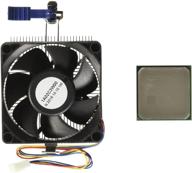
💪 AMD FD6300WMHKBOX FX-6300 Black Edition: 6-Core Processor with Unparalleled Performance

134 Review
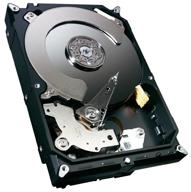
Seagate Barracuda 1TB HDD ST1000DM003

93 Review
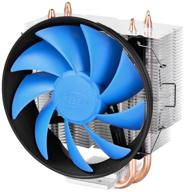
Deepcool GAMMAXX 300 CPU cooler, silver/black/blue

166 Review
Another interesting products
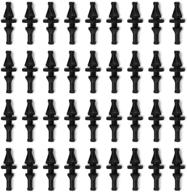
36-Pack Black Rubber PC CPU/Case Fan Screws/Rivets Set for Computer

11 Review
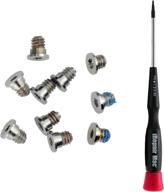
MacBook Retina 13-inch (A1425, A1502) and 🔩 15-inch (A1398) Bottom Case Screw Set with Pentalobe Screwdriver

11 Review
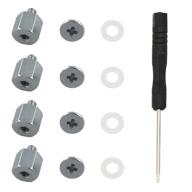
M.2 Screw Kit: Easy Mounting for NVMe SSDs on ASUS Motherboards

19 Review
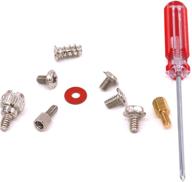
Glarks 660 Pieces Phillips Assortment Motherboard

10 Review

